Hospitalsengen – the hospital pasture
The hospital’s own pasture, which surrounded the hospital and extended across onto the other side of Kong Oscars gate, was known as Hospitalsengen. Until the end of the 19th century, Hospitalsengen was the name used for the hospital’s land on the other side of Kong Oscars gate, which remained undeveloped until the end of the century. St. Jørgen’s had its own cemetery on parts of Hospitalsengen.
The pastures were used for the hospital’s own farm and, by the middle of the 18th century, the hospital had nine cows. After the farm stopped operating in the early 19th century, the pastures were leased, which gave the residents an income. At the end of the 18th century, the Danckert Krohns foundation was established on parts of the hospital’s grounds. The southern parts of Hospitalsengen were eventually rented out to the cathedral parish as a cemetery, and these are now part of St. Jacob’s cemetery.
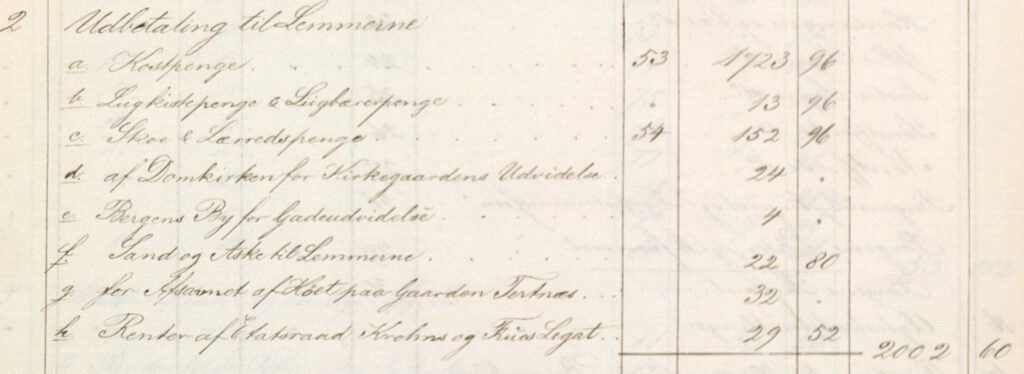
Bergen City Archives.
In the 17th century, Hospitalsengen was occasionally used as a place of execution. In his diary, Mikael Hofnagel wrote that a sorceress was executed ‘at the Spital’ in 1634. Two years later, a thief was executed on the same spot.
Pictures from the latter half of the 19th century show the large area of undeveloped land that made up Hospitalsengen. Hay drying racks can also be seen in a number of pictures. They also show that, for a period from the 1880s, some areas of the pasture were used to grow crops. After the Markens Battalion drill corps was established in the 1850s, they are said to have used Hospitalsengen as a drill ground.
At a time in the mid-19th century when there were a large number of leprosy patients, building a larger hospital on Hospitalsengen was considered. That did not happen and, at the end of the 19th century, the area was sold to private developers. In the late 1890s and early 1900s, apartment buildings were built there, on streets that are now called St. Jørgens gate, Danckert Krohns gate, Erik Pontoppidans gate and Richard Nordraaks gate.
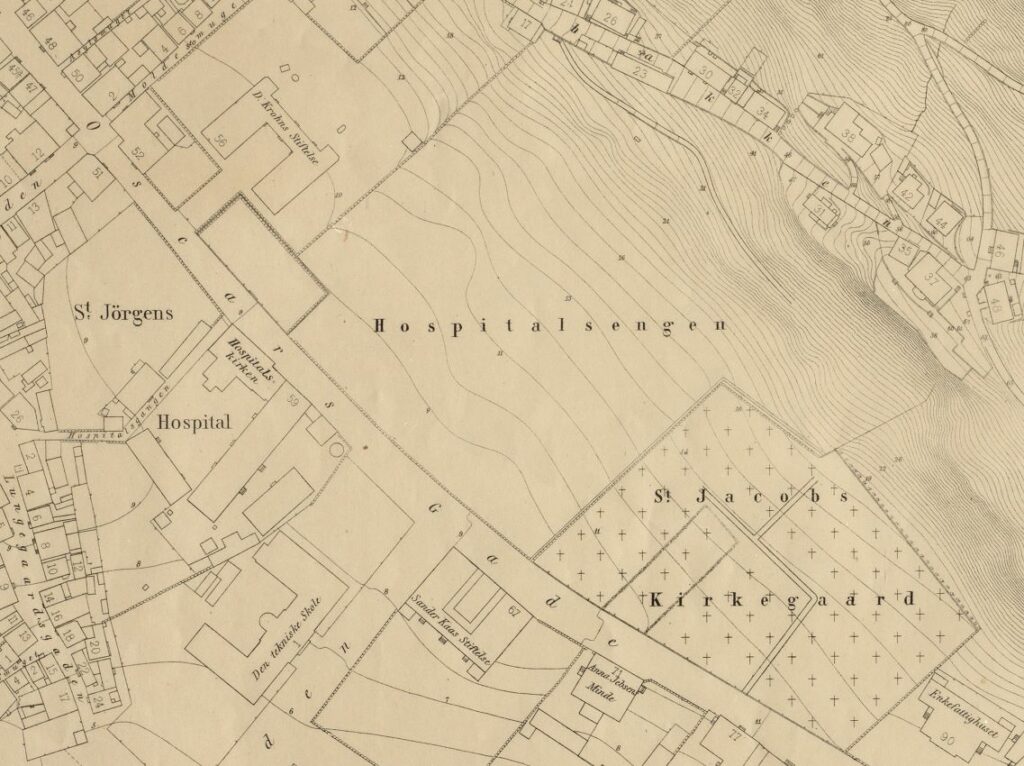
The University of Bergen Library.
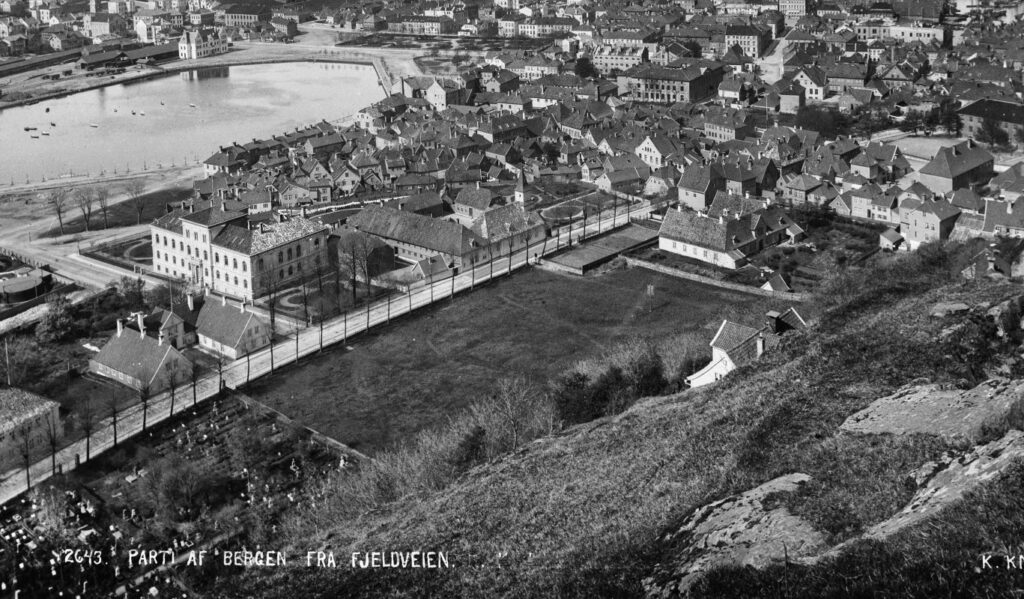
Photo: Knud Knudsen. Detail. The University of Bergen Library.
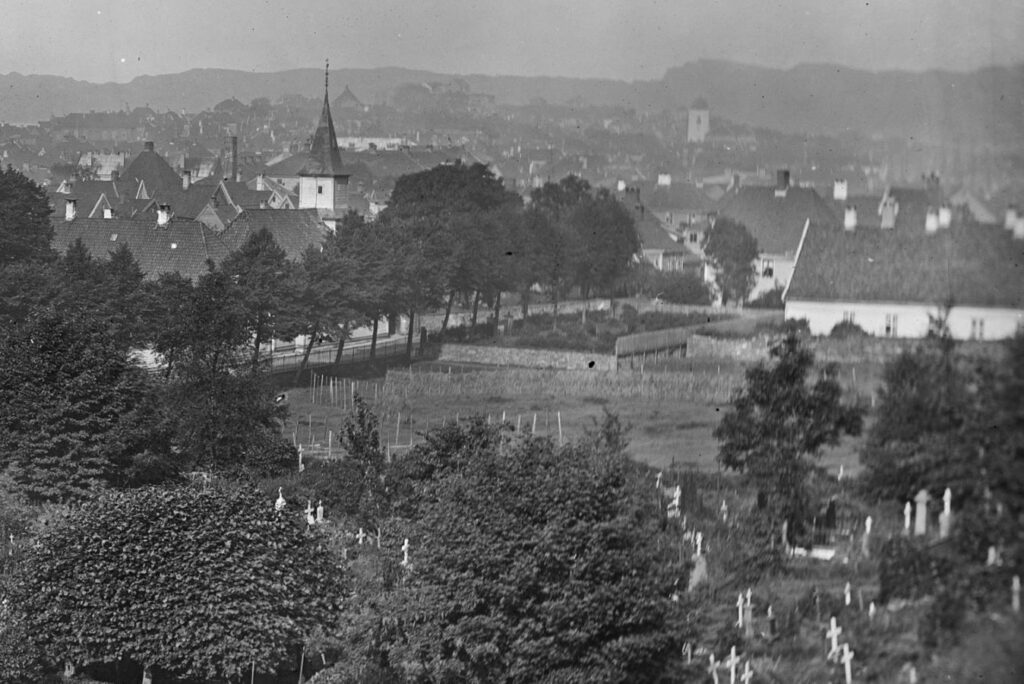
Photo: Knud Knudsen, 1865–1880. The University of Bergen Library.
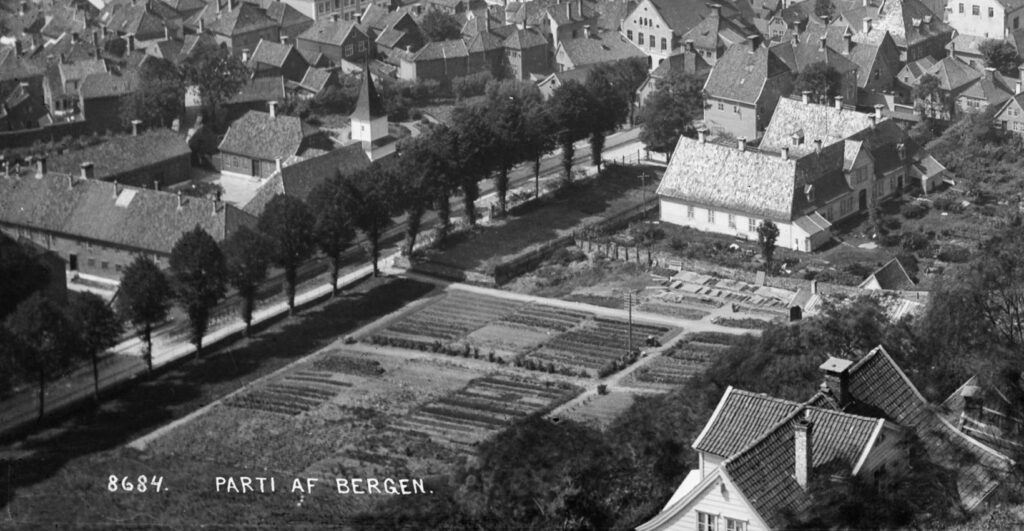
Photo: Knud Knudsen. Detail. The University of Bergen Library.



